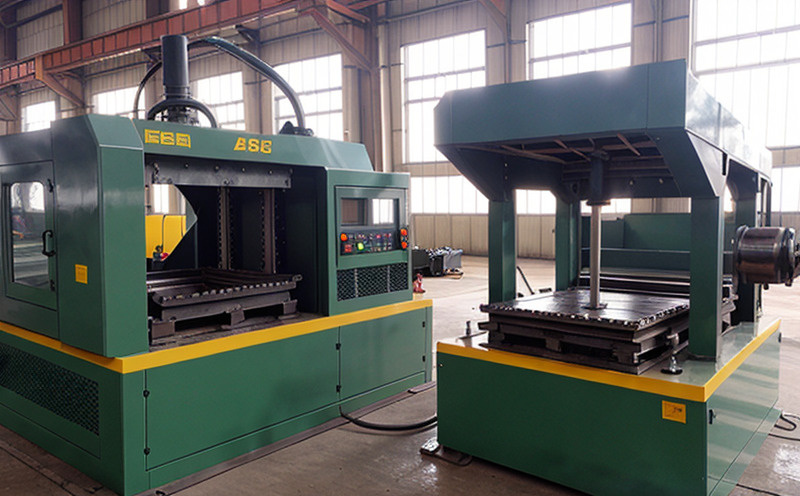EN 12420 Copper Alloy Forgings Quality Testing
The CEN standard EN 12420 specifies the requirements for the quality testing of copper alloy forgings. This comprehensive testing ensures that forged components meet the highest levels of integrity and reliability, which is critical for industrial manufacturing applications.
Copper alloy forgings are widely used in sectors such as aerospace, automotive, and heavy machinery due to their excellent mechanical properties and thermal stability. The quality of these forgings can significantly impact product performance and safety. Compliance with EN 12420 helps manufacturers meet regulatory requirements and ensures consistent production processes.
The testing process outlined in EN 12420 involves multiple stages, including visual inspection, hardness testing, tensile strength measurement, chemical analysis, and non-destructive testing (NDT). Each step is crucial for identifying defects or anomalies that could affect the performance of the final product. For instance, NDT methods like ultrasonic testing or magnetic particle testing are used to detect internal flaws without damaging the material.
Visual inspection checks for surface imperfections such as cracks, folds, and inclusions. Hardness testing measures the resistance of the forgings to indentation using a hardness tester. Tensile strength tests assess how much force can be applied before the sample breaks. Chemical analysis verifies the elemental composition to ensure it matches the specified alloy grade.
The standard also covers post-forging heat treatment, which is essential for optimizing material properties like hardness and ductility. Proper heat treatment ensures that the forgings are free from residual stresses and have a consistent microstructure throughout the component. Post-treatment inspections follow the same rigorous procedures as initial testing to verify that all desired changes have been achieved.
Accurate and reliable testing according to EN 12420 is vital for maintaining quality standards in industrial manufacturing processes. It helps prevent costly failures, enhances product reliability, and builds trust with customers and stakeholders. By adhering to this standard, manufacturers can ensure that their copper alloy forgings meet the highest industry expectations.
| Test Method | Description | Purpose |
|---|---|---|
| Visual Inspection | Examining the surface for defects using naked eye or magnifying glass. | To identify visible flaws such as cracks, folds, and inclusions. |
| Tensile Testing | Subjecting samples to tensile forces until fracture. | To determine the maximum stress a material can withstand before breaking. |
| Hardness Testing | Measuring hardness using different scales like Rockwell or Brinell. | To assess the resistance to localized plastic deformation. |
| Chemical Analysis | Quantifying elemental composition through spectroscopy or other methods. | To confirm compliance with specified alloy grades. |
| Ultrasonic Testing (UT) | Sending ultrasonic waves into the material to detect internal defects. | To locate and characterize internal flaws without damaging the part. |
Applied Standards
The testing of copper alloy forgings strictly adheres to the requirements set forth in EN 12420. This standard ensures that all aspects of the forging process, from raw material selection to final inspection, are conducted with precision and rigor.
EN 12420 covers various types of copper alloy forgings, including those made from brass, bronze, and cupronickel alloys. The standard provides detailed guidance on test methods, acceptance criteria, and reporting requirements. Compliance with these standards is essential for maintaining product quality and ensuring that forged components meet the stringent demands of their intended applications.
Some key aspects of EN 12420 include:
- Detailed specifications for visual inspection and acceptance criteria
- Guidelines for hardness testing, including recommended methods and tolerances
- Instructions for tensile strength measurement and acceptable limits
- Requirements for chemical analysis, including sample preparation and analytical techniques
- Non-destructive testing procedures with detailed acceptance levels
Customer Impact and Satisfaction
The implementation of EN 12420 copper alloy forging quality testing has a profound impact on customer satisfaction. By ensuring that all forged components meet the highest standards, manufacturers can provide products that are reliable, durable, and safe for use in critical applications.
Customers benefit from:
- Enhanced product performance due to consistent quality
- Increased confidence in the reliability of forged components
- Reduced risk of premature failure or accidents
- Achievement of regulatory compliance and industry best practices
Manufacturers who adhere to EN 12420 are able to build strong relationships with their customers, ensuring long-term business success. This commitment to quality also enhances the reputation of the company in the market, attracting new clients and maintaining a loyal customer base.
Competitive Advantage and Market Impact
The adoption of EN 12420 for copper alloy forging testing provides significant competitive advantages. By meeting or exceeding this standard, manufacturers can differentiate themselves from competitors who may not follow such stringent quality protocols.
Key benefits include:
- Market leadership in delivering premium-quality forged components
- Enhanced reputation and brand recognition among industry leaders
- Increased customer trust, leading to higher sales volumes
- Access to new markets with stringent quality requirements
In addition to these direct advantages, compliance with EN 12420 also fosters innovation within the organization. The rigorous testing process encourages continuous improvement in manufacturing processes and materials selection.





